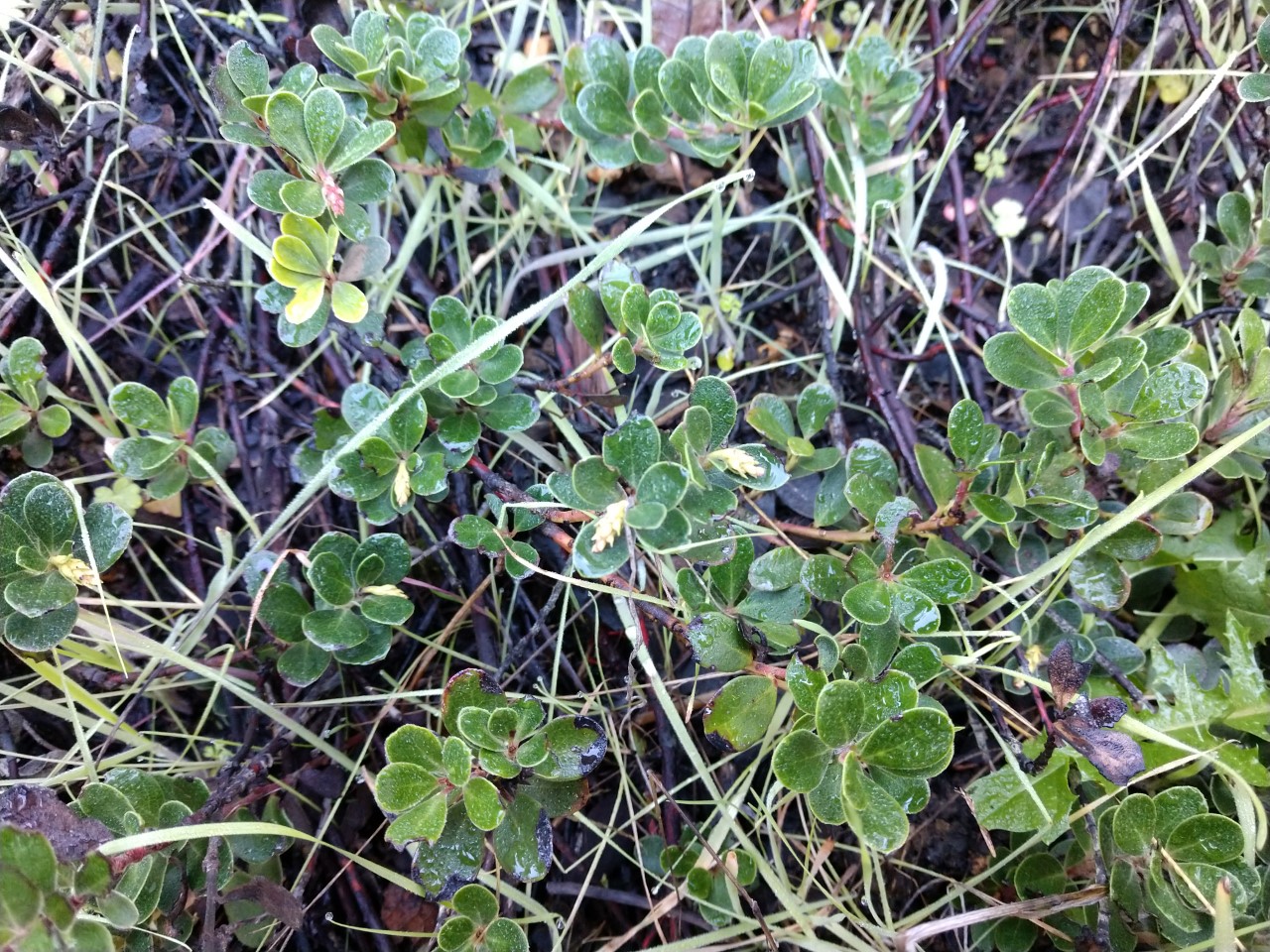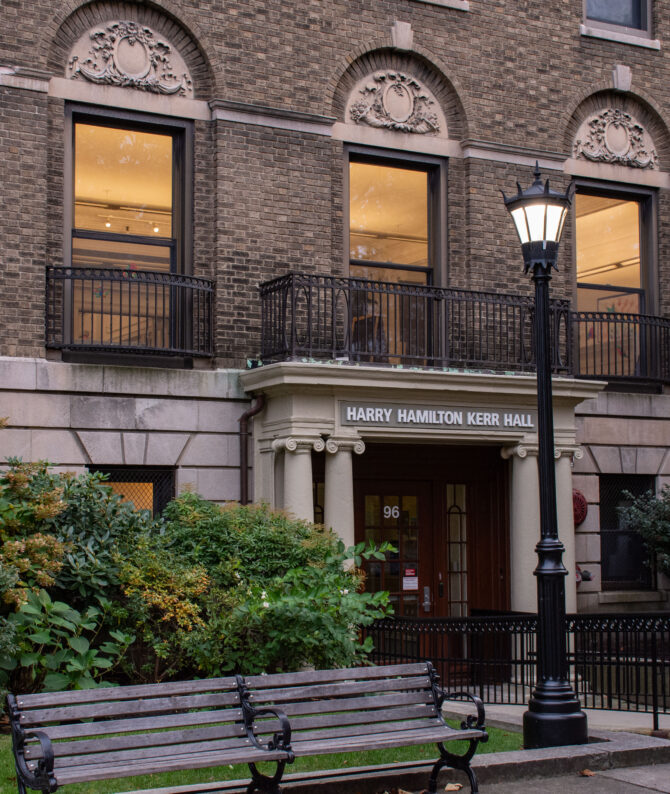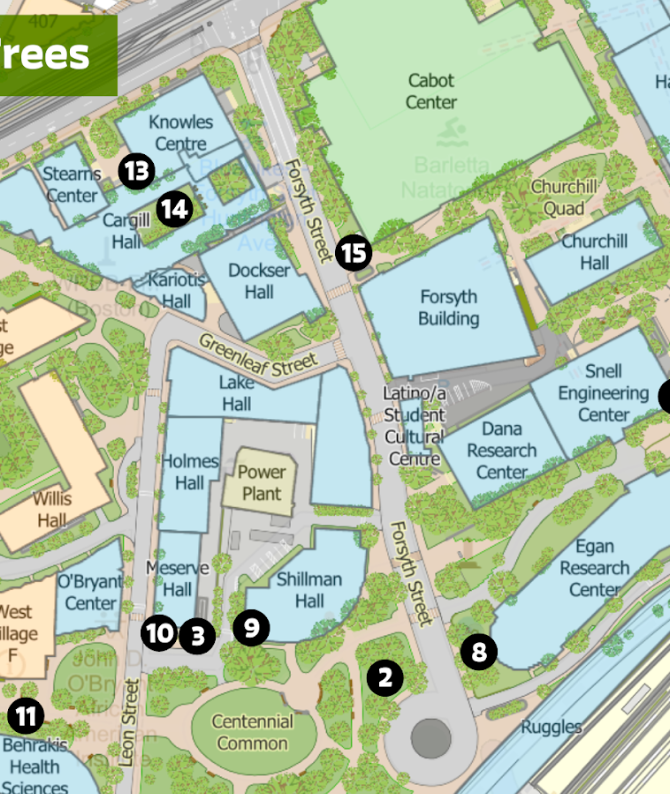Mills Campus Added to Northeastern’s Arboreta

The Mills campus in Oakland will soon undergo a tree inventory process in order to better understand and document the many species present that will be added to Northeastern’s global arboretum collections. The Boston campus is already an arboretum, consisting of over 1000 trees and 5000 shrubs. With the growth of Northeastern’s campus footprint across North America and beyond — many of which in different climate zones — there is a unique opportunity to grow for a wider variety of plants.
The new tree inventory will be conducted by Bartlett Tree Experts and will be the third one in Mills’ recent history. Other inventories were conducted in 1967 and 2004.
Possessing a current plant inventory is important not only to get a better understanding of what is being grown on campus, but also what the campus landscape maintenance needs are. While conducting the inventory, the tree company will also assess the health of each tree and make note of any hazards, specifically which ones are in danger of falling or breaking. Given the recent storms and tumultuous weather in California, which Steve describes as “a tale of two extremes,” plant health knowledge is critical information to help keep students and faculty safe.
Once the task is complete, the director of horticulture at the Boston campus Steve Schneider will input the data into Iris BG botanical database, an important tool to help the university keep different campus’ collections organized. Each tree will get its own specific identification number within the database. Even if the tree gets removed or dies, the number will remain in the system. Schneider stresses that the history of the trees that were once there is just as important as keeping track of what is currently there. According to Schneider, “the last thing that you want is a separate database for each location that do not talk to each other.”
In addition to the Mills Campus Collection, Schneider will soon add and document the plants in Nahant, the new Roux Institute, and all the other campuses in the global network that support landscapes and green spaces. Schneider is particularly excited about the Roux Institute in Maine and the opportunity to grow coastal plants.
“They have incorporated a lot of vegetative restoration into the conceptual design so far, which means the addition of a lot of coastal plants [that] obviously, we can’t grow on our Boston campus,” Schneider said.
 |
By taking advantage of the different climate capacities of different campuses, Schneider will be able to grow Northeastern’s collection and cultivate diverse green spaces that are not only useful aesthetically, but also beneficial for climate resiliency and research purposes. According to Steve, many arboreta are limited by both the space and climate. The Boston campus is already developed and crowded whereas several of the Northeastern’s global campuses offer an increased opportunity for new growth and expansion.
The Oakland campus includes a working farm, sprawling lawns with picturesque trees and a botanical garden with a greenhouse. The campus has one some extremely rare plants, including the indigenous Arctostaphylos franciscana, a rare native shrub. Landscape wise, there is a Greek theatre situated in the southern half of the campus and Lake Alito on the Eastern side, which supplies the irrigation for much of campus.
“The buildings were built to nestle themselves into the landscape, which is kind of cool,” Schneider said.
In November of 2022, Schneider traveled to the Mills campus to understand the needs of the landscaping and botanical staff, explore the campus and learn about its rich inventory, and develop short and long term plans for the campus. He met with Sarah Swope, the biology professor and director of the botanical garden, to understand the state of the botanical garden and what kind of support it needs. For a long time, it was getting no funding from Mills, though with Northeastern’s acquisition of the campus, Swope has access to more resources for upkeep. Better upkeep of the facilities, and eventual staff additions, will enable the botanic garden labs to once again compete for grant funding associated with plant research.
“They haven’t had the luxury to be able to think about the future because they have been struggling to maintain the present,” Schneider said.
He also met with grounds manager Ron Galvin, “aka superman,” who manages a team of six people for the landscaping crew for a 135-acre campus. With such little funding, in the past they had to scrap machinery in order to maintain outdated machinery. Now, they will be able to hopefully hire more people and get improved equipment.
“Whatever we invest in here — including the landscape [and] plants — we are going to end up delivering tenfold to our student and academic communities,” Schneider said. “There’s so much care and thought that went into developing the Mills campus grounds over the decades. Northeastern is proving that its future will continue to remain a vibrant greenspace.”
Written by Renée Abbott, March 14th, 2023



